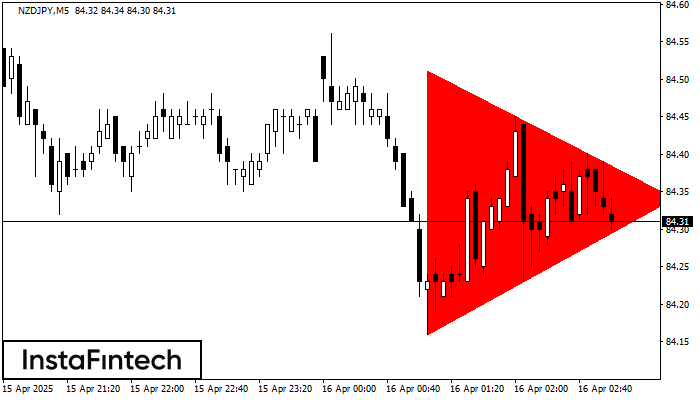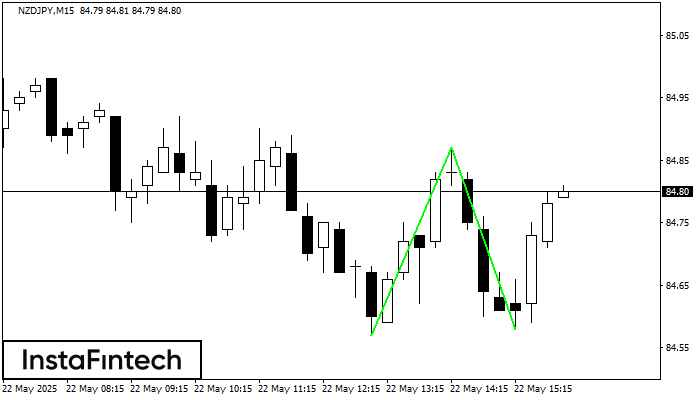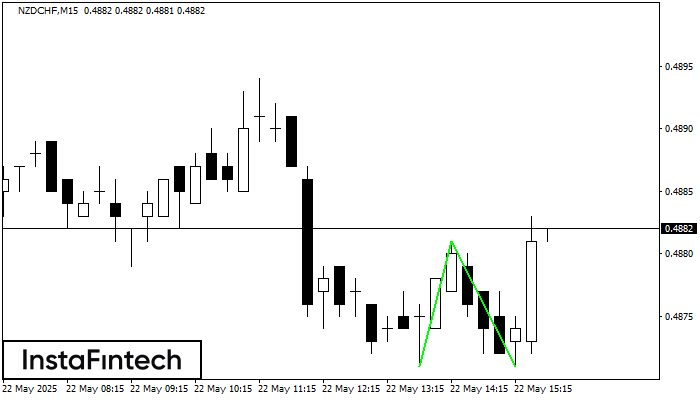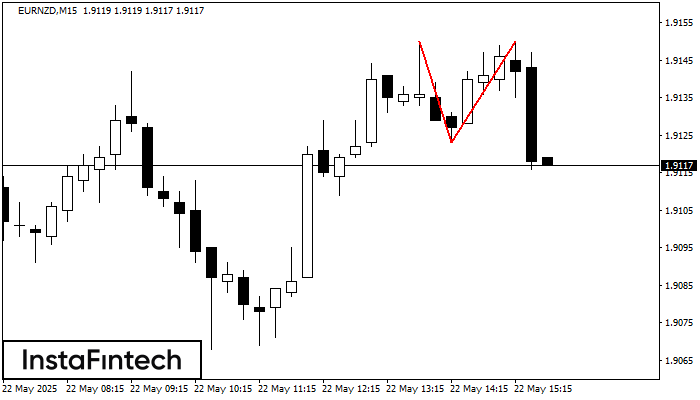Bearish Symmetrical Triangle
was formed on 16.04 at 02:00:48 (UTC+0)
signal strength 1 of 5

According to the chart of M5, NZDJPY formed the Bearish Symmetrical Triangle pattern. Description: The lower border is 84.16/84.34 and upper border is 84.51/84.34. The pattern width is measured on the chart at -35 pips. The formation of the Bearish Symmetrical Triangle pattern evidently signals a continuation of the downward trend. In other words, if the scenario comes true and NZDJPY breaches the lower border, the price could continue its move toward 84.19.
The M5 and M15 time frames may have more false entry points.
- All
- All
- Bearish Rectangle
- Bearish Symmetrical Triangle
- Bearish Symmetrical Triangle
- Bullish Rectangle
- Double Top
- Double Top
- Triple Bottom
- Triple Bottom
- Triple Top
- Triple Top
- All
- All
- Buy
- Sale
- All
- 1
- 2
- 3
- 4
- 5
Double Bottom
was formed on 22.05 at 15:00:08 (UTC+0)
signal strength 2 of 5
The Double Bottom pattern has been formed on NZDJPY M15. Characteristics: the support level 84.57; the resistance level 84.87; the width of the pattern 30 points. If the resistance level
The M5 and M15 time frames may have more false entry points.
Open chart in a new window
Double Bottom
was formed on 22.05 at 14:45:52 (UTC+0)
signal strength 2 of 5
The Double Bottom pattern has been formed on NZDCHF M15; the upper boundary is 0.4881; the lower boundary is 0.4871. The width of the pattern is 10 points. In case
The M5 and M15 time frames may have more false entry points.
Open chart in a new window
Double Top
was formed on 22.05 at 14:45:30 (UTC+0)
signal strength 2 of 5
The Double Top pattern has been formed on EURNZD M15. It signals that the trend has been changed from upwards to downwards. Probably, if the base of the pattern 1.9123
The M5 and M15 time frames may have more false entry points.
Open chart in a new window




















